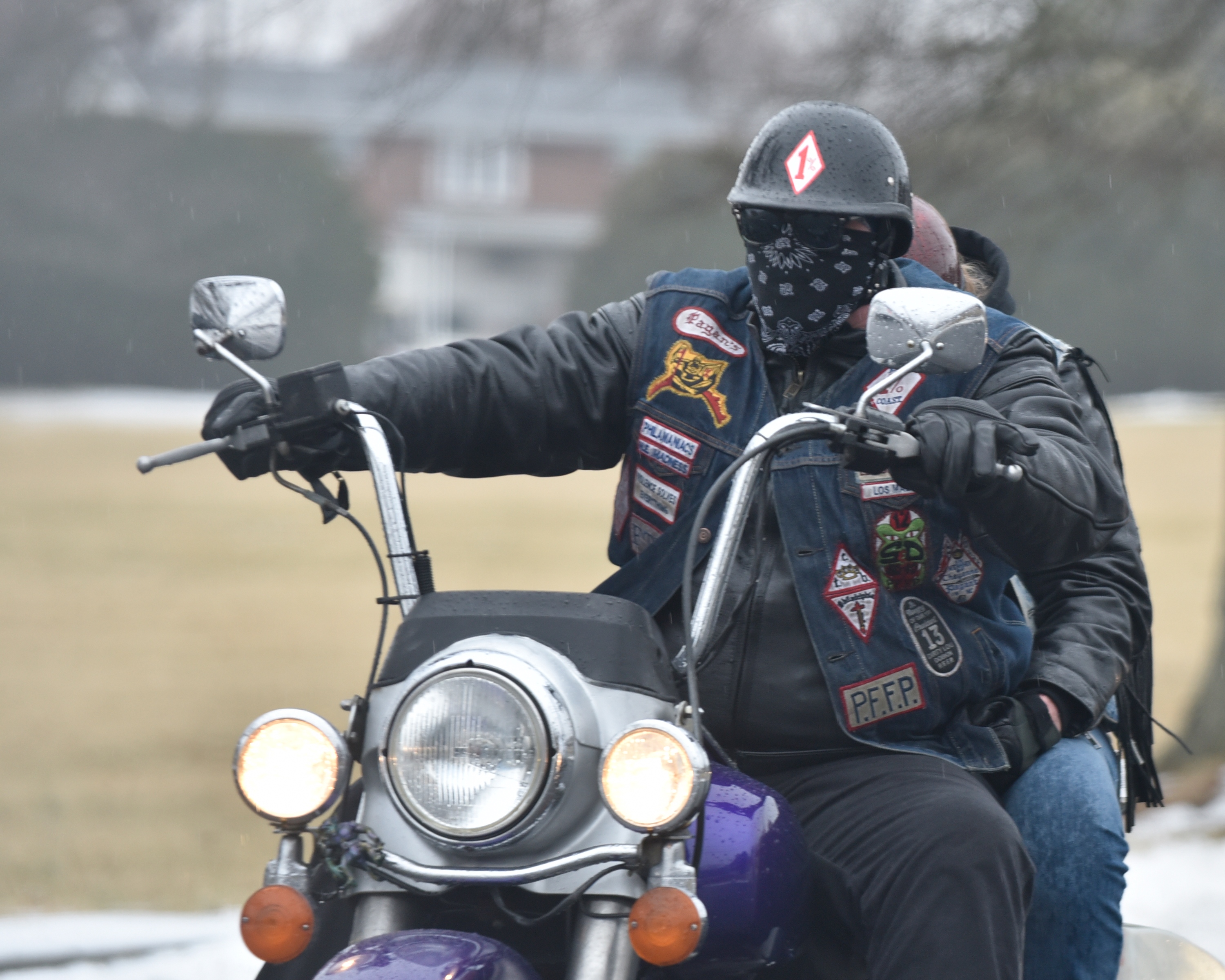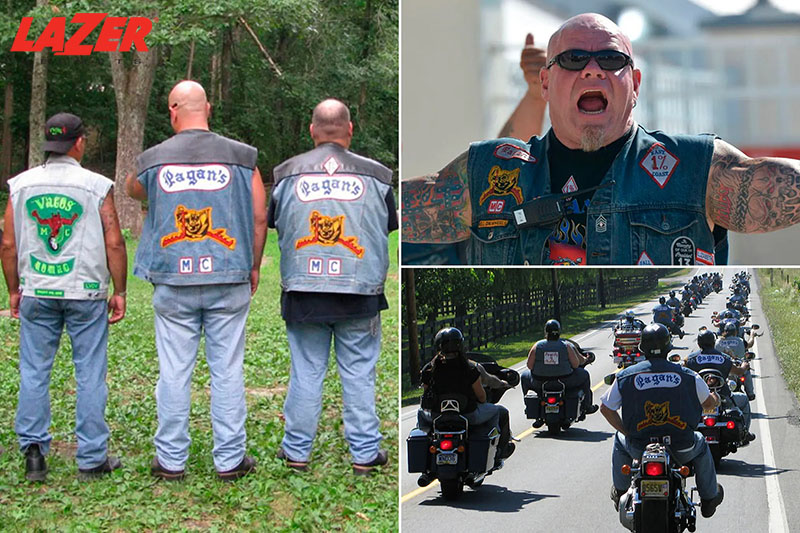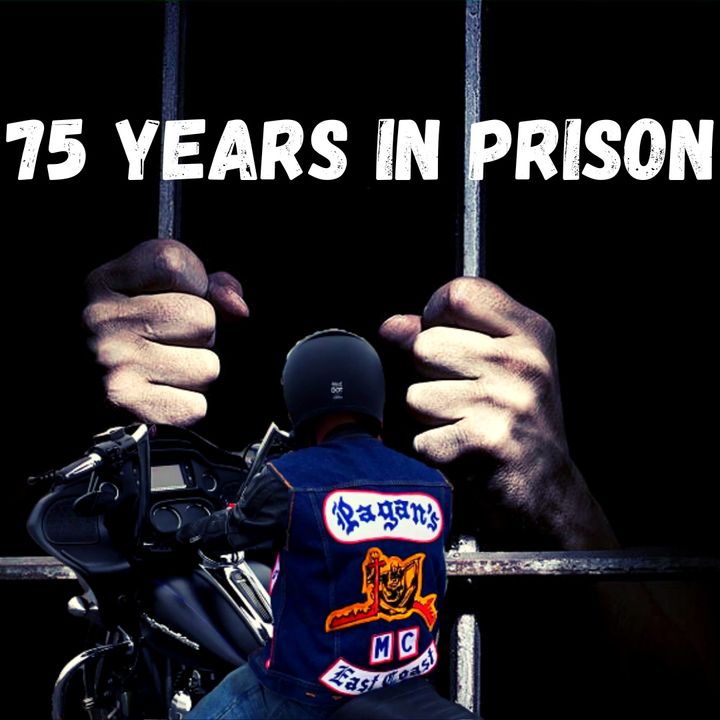Pagans Motorcycle Gang: Inside The World Of Leather Jackets, Brotherhood, And Controversy
When you hear the name "Pagans Motorcycle Gang," images of roaring Harley-Davidsons, leather-clad bikers, and late-night rides probably flash through your mind. This infamous motorcycle club has been around for decades, leaving a lasting mark on the world of outlaw motorcycle gangs. But who exactly are the Pagans, and what makes them such a legendary – and controversial – group? Let’s dive into their world, exploring their history, culture, and the controversies that have shaped their reputation.
The Pagans Motorcycle Gang is more than just a group of guys who love riding bikes. They represent a subculture that thrives on brotherhood, loyalty, and a set of unwritten rules that govern their lives. From their iconic patch to their strict initiation process, the Pagans have carved out a unique identity in the world of outlaw motorcycle clubs.
But let’s not sugarcoat it – the Pagans have also been linked to illegal activities, violence, and organized crime. This duality of being both a tight-knit community and a criminal organization is what makes them so fascinating to outsiders. So, buckle up, because we’re about to take you on a wild ride through the history, culture, and controversies surrounding the Pagans Motorcycle Gang.
- Kabelzug Bungen Dein Guide Fr Effektives Training
- Die Besten Deutschen Sngerinnen Von Schlager Bis Pop
Table of Contents
- History of the Pagans Motorcycle Gang
- Structure and Hierarchy
- Symbols and Patch Meanings
- Initiation Process
- Cultural Identity and Lifestyle
- Controversies and Legal Issues
- Famous Members and Figures
- Impact on Pop Culture
- Law Enforcement’s Perspective
- The Future of the Pagans Motorcycle Gang
History of the Pagans Motorcycle Gang
The Pagans Motorcycle Gang traces its roots back to the early 1960s, when a group of bikers in the Philadelphia area decided to form their own club. What started as a small group of friends with a shared passion for motorcycles quickly grew into one of the most notorious outlaw motorcycle gangs in the United States. The original members were inspired by the freedom and camaraderie that came with riding together, but they soon realized that being part of a club meant more than just sharing the road.
By the late 1960s, the Pagans had established chapters across the East Coast, expanding their influence and reputation. They became known for their distinctive patch, which features a horned figure riding a motorcycle under a full moon. This iconic symbol has become synonymous with the Pagans and is instantly recognizable to anyone familiar with the biker subculture.
Key Milestones in the Pagans’ History
- 1960s: Formation of the first chapter in Philadelphia.
- 1970s: Expansion to multiple chapters across the East Coast.
- 1980s: Increased involvement in illegal activities and clashes with law enforcement.
- 2000s: Continued presence despite increased scrutiny from authorities.
Throughout their history, the Pagans have faced numerous challenges, including rivalries with other motorcycle gangs and intense scrutiny from law enforcement agencies. Yet, they have managed to maintain their identity and continue to thrive in the world of outlaw motorcycle clubs.
- Bo6 Loadouts Ultimative Waffenbuilds Aufstze
- Gegen Wrmer Rezeptfreie Tabletten Aus Deutschland Im Check
Structure and Hierarchy
Like many motorcycle gangs, the Pagans have a well-defined structure and hierarchy that governs their operations. At the top of the chain is the president, who serves as the leader of the chapter. Below the president, there are other key roles, such as the vice president, secretary, treasurer, and enforcer, each with specific responsibilities.
Each chapter operates semi-independently, but they all adhere to the overarching rules and traditions of the Pagans Motorcycle Gang. This decentralized structure allows the gang to maintain its unity while giving individual chapters the flexibility to operate in their local areas.
How the Hierarchy Works
- President: The ultimate decision-maker and leader of the chapter.
- Vice President: Supports the president and steps in if the president is unavailable.
- Secretary: Handles communication and records. li>Treasurer: Manages the chapter’s finances.
- Enforcer: Responsible for maintaining discipline within the chapter.
This structure ensures that the Pagans can function smoothly, even in the face of external pressures. It also reinforces the sense of brotherhood and loyalty that is so central to their identity.
Symbols and Patch Meanings
The Pagans Motorcycle Gang is perhaps best known for their distinctive patch, which features a horned figure riding a motorcycle under a full moon. This patch is more than just a piece of clothing – it’s a symbol of identity and belonging. Members of the Pagans take great pride in wearing their patches, which they refer to as their "colors."
But the patch isn’t just a single image – it’s actually a three-piece design that includes the top rocker (which says "Pagans"), the main patch (the horned figure), and the bottom rocker (which indicates the chapter location). Wearing all three pieces together signifies that the wearer is a fully patched-in member of the gang.
What the Patch Represents
- Horned Figure: Symbolizes power, strength, and rebellion.
- Full Moon: Represents the night, when the Pagans feel most at home.
- Motorcycle: Embodies the freedom and adventure that define the biker lifestyle.
For members of the Pagans, the patch is a badge of honor that they’ve earned through hard work, loyalty, and dedication to the gang. It’s also a warning to outsiders – wearing the Pagans colors is a sign of respect and allegiance to the club, and it’s not to be taken lightly.
Initiation Process
Becoming a member of the Pagans Motorcycle Gang isn’t as simple as just showing up and asking to join. The initiation process is long and rigorous, designed to test the prospective member’s loyalty, commitment, and ability to contribute to the gang. Prospects typically go through a probationary period, during which they must prove themselves to the existing members.
During this time, prospects are expected to perform various tasks and duties for the gang, such as running errands, maintaining the club’s property, and participating in rides and events. They must also demonstrate their knowledge of the gang’s history, rules, and traditions. Only those who pass this probationary period are allowed to become fully patched-in members.
Steps to Becoming a Pagan
- Prospect phase: A period of testing and proving oneself.
- Vote by existing members: Prospects must be approved by a majority vote.
- Patch ceremony: A formal event where the new member receives their colors.
This initiation process ensures that only the most dedicated and trustworthy individuals become part of the Pagans Motorcycle Gang. It also reinforces the sense of brotherhood and loyalty that is so central to the gang’s identity.
Cultural Identity and Lifestyle
Being a member of the Pagans Motorcycle Gang is about more than just wearing a patch and riding a bike. It’s a way of life that encompasses a wide range of activities and behaviors. From the music they listen to (often rock and blues) to the clothes they wear (leather jackets and jeans), the Pagans have developed a distinct cultural identity that sets them apart from other motorcycle gangs.
The lifestyle of a Pagan is centered around freedom, brotherhood, and loyalty. Members often spend long hours on the road, traveling to rallies, events, and other gatherings. They also participate in charity rides and community events, showing that they’re not just about rebellion and crime – they also care about giving back to their communities.
Key Aspects of Pagan Culture
- Music: Rock, blues, and other genres that reflect the biker lifestyle.
- Clothing: Leather jackets, jeans, and boots – the classic biker look.
- Community: A strong sense of brotherhood and loyalty among members.
Despite their reputation as outlaws, the Pagans have a rich cultural identity that goes beyond the stereotypes. They’re a group of individuals who have chosen to live life on their own terms, and they take great pride in their unique way of life.
Controversies and Legal Issues
Of course, no discussion of the Pagans Motorcycle Gang would be complete without addressing the controversies and legal issues that have surrounded them over the years. The gang has been linked to a wide range of illegal activities, including drug trafficking, weapons smuggling, and violent crimes. These activities have earned them the attention of law enforcement agencies, which have launched numerous investigations and prosecutions against the gang.
Despite these challenges, the Pagans have continued to operate, often adapting to changing circumstances and finding new ways to stay ahead of the authorities. Some members have even turned informant, providing valuable information to law enforcement in exchange for reduced sentences or other benefits.
Notable Legal Cases
- Operation Wild Card: A major investigation into the Pagans’ activities in the 1980s.
- Recent indictments: Ongoing legal battles against the gang in various states.
While the controversies and legal issues surrounding the Pagans are undeniable, they also highlight the resilience and adaptability of the gang. No matter what challenges they face, the Pagans continue to thrive in the world of outlaw motorcycle clubs.
Famous Members and Figures
Over the years, the Pagans Motorcycle Gang has produced a number of famous members and figures who have left a lasting impact on the world of outlaw motorcycle clubs. These individuals have become legends in their own right, known for their leadership, loyalty, and contributions to the gang.
One of the most famous Pagans is "Popeye" Paul Riccio, who served as the president of the Philadelphia chapter and became a prominent figure in the gang’s history. Another notable member is "Red" Rodney Carlson, who played a key role in the gang’s expansion during the 1970s and 1980s.
Notable Pagans
- Popeye Paul Riccio: A legendary president of the Philadelphia chapter.
- Red Rodney Carlson: A key figure in the gang’s expansion.
These individuals have helped shape the Pagans into the formidable force they are today. Their stories are a testament to the gang’s enduring legacy in the world of outlaw motorcycle clubs.
Impact on Pop Culture
The Pagans Motorcycle Gang has also had a significant impact on pop culture, inspiring movies, TV shows, and books that explore the world of outlaw motorcycle clubs. From the gritty realism of "Sons of Anarchy" to the fictionalized drama of "The Wild Angels," the Pagans have been a source of inspiration for storytellers looking to capture the essence of the biker lifestyle.
But the Pagans’ influence extends beyond entertainment. They’ve also been the subject of numerous documentaries and news reports, which have helped to shape public perception of outlaw motorcycle gangs. Whether portrayed as villains or misunderstood outlaws, the Pagans have left an indelible mark on the cultural landscape.
Law Enforcement’s Perspective
From the perspective of law enforcement, the Pagans Motorcycle Gang represents a significant threat to public safety. Agencies such as the FBI and ATF have launched numerous investigations into the gang’s activities, resulting in arrests, indictments, and convictions. Despite these efforts, the Pagans have proven to be a resilient and adaptable organization, capable of withstanding even the toughest legal challenges.
Law enforcement officials often describe the Pagans as a highly organized criminal enterprise, capable of coordinating complex operations across multiple states. This level of organization makes them a formidable opponent for authorities, who must constantly adapt their strategies to keep up with the gang’s evolving tactics.
The Future of the Pagans Motorcycle Gang
Looking ahead, the future of the Pagans Motorcycle Gang remains uncertain. While they continue to operate and thrive in the world of outlaw motorcycle clubs, they also face increasing scrutiny from law enforcement agencies and changing societal attitudes toward their lifestyle. Will the Pagans be able to adapt to these challenges and continue their legacy, or will they eventually fade into obscurity?
Only time will tell, but one thing is certain –

Pagans Motorcycle Club Chaptersabout

Pagan's Motorcycle Club All About Biker Gang Pagans

Pagans motorcycle gang leader sentenced in Raleigh to 75 years in